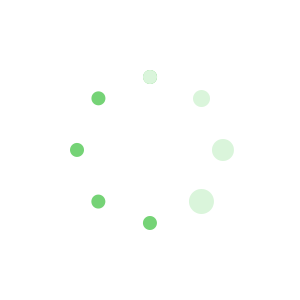情态动词是一种本身有一定的词义,表示说话人的情绪、态度或与语气的动词,但不能单独作谓语,只能和其他动词原形构成谓语。
中考关于情态动词的考查主要有以下几点:
1.can,may,must 等情态动词在陈述句中的用法;
2.含有情态动词的疑问句的回答;
3.不同情态动词的否定意义也不同;
4.情态动词的被动语态;
5.情态动词易混点归纳;
6.情态动词例题解析;
7.情态动词特点。
01
can,may,must 等情态动词在陈述句中的用法
can的用法
1.表示能力、许可、可能性。表示能力时一般译为“能、会”,即有种能力,尤其是生来具备的能力,此时may和must均不可代替它。
She can swim fast, but I can't. 她能游得很快,但我不能。
I can see with my eyes. 我用眼睛看。
2.表示许可,常在口语中。
You can use my dictionary.你可以用我的字典。
3.表示推测,意为“可能”,常用于否定句和疑问句中,此时can't 译为“不可能”。
Can the news be true? 这个消息会是真的吗?
—Can it be our teacher?那个人有可能是我们老师吗?
—No, it can't be our teacher. He is on a visit to the Great Wall.不可能。咱们老师正在游览长城呢。
【例题】—I think Miss Gao must be in the library. She said she would go there.
—No. She __be there, I have just been there.
A.can't B.mustn't C.needn't D.wouldn't
【解析】根据下文“我刚去过那儿”可知,应为“ 不可能”,can't表示推测。答案为A。
could的用法
1.can的过去式,意为“ 能、会”,表示过去的能力。
He could write poems when he was 10.
他十岁时就会写诗。
2.could在疑问句中,表示委婉的语气,此时 could没有过去式的意思。
Could you do me a favour? 你能帮我个忙吗?
—Could I use your pen? 我能用一下你的钢笔吗?
—Yes, you can.可以。(注意回答)
may的用法
1.表示请求、许可,比can正式。
May I borrow your bike?
我可以借你的自行车吗?
You may go home now.
现在你可以回家了。
【例题】—_______ I borrow your MP3?
—Sure . Here you are.
A. May B.Should C.Must D. Would
【解析】在此处表示请求,意为“ 做……可以吗”。答案:A
2.表示推测,谈论可能性,意为“可能,或许”,一般用于肯定句中。
It may rain tomorrow. 明天可能会下雨。
She may be at home. 她可能在家呢。
3.may的过去式为might,表示推测时。可能性低于may。
He is away from school. He might be sick.
他离开学校了,可能是他生病了。
4.表示希望、祈求、祝愿,常可译为“祝愿”。通常是用may +主+V
May you have a good time. 祝你过得愉快。
May you be happy!祝你幸福!
May you succeed!祝你成功!
must的用法
1.must表示主观看法,意为“必须、一定”。
You must stay here until I come back.在我回来之前你必须呆在这儿。
Must I hand in my homework right now? 我必须现在交作业吗?
2.其否定形式mustn't表示“ 一定不要” 、“千万别”、“禁止,不许”。
You mustn't play with fire.你不许玩火。
You mustn't be late. 你一定不要迟到。
3.对must引导的疑问句,肯定回答为must,否定回答为needn't或don't have to.
—Must I finish my homework?我现在必须完成作业吗?
—No, you needn't.不,你不必。
4.must表示有把握的推测,用于肯定句。
The light is on,so he must be at home now.灯亮着,他现在肯定在家。
5.注意其反意问句的构成形式:
当must表示肯定的判断、推测时,其反意疑问句要用实际问句的助动词来构成。
She must have seen the film before,hasn't she?注意反意疑问句的后半部分
You must have met uncle Wang in the shop yesterday,didn't you? 注意反意疑问句的后半部分
need的用法
1.need表示需要、必须,主要用于否定句和疑问句中,其否定形式为needn't,意为“没有必要,不必”。
用need提问时,肯定回答为must,否定回答为needn't或don't have to。
—Need I stay here any longer? 我还有必要留在这儿吗?
—Yes,you must.是的。
—No.you needn't /don't have to. 不,你不必。
2.need还可以作实义动词,此时有人称、数和时态的变化,如果是人作主语后边多接动词不定式。
I need to do it right now.我需要马上做这件事。
He needs to learn more about the girl.他需要多了解那个女孩。
如果是物作主语,一般用need doing与need to be done,这种情况下应注意两点:
1主动形式的动名词doing具有被动的含义;
2该动名词可以改为其动词不定式的被动形式而句子的意义不变。
The door needs painting.=The door needs to be painted. 那扇门需要油漆一下。
Your car needs mending.=Your car needs to be repaired. 你的车需要维修了。
dare的用法
dare意为“敢、敢于”, 用法近似于need,有两种词性:
1.dare 作为情态动词,多用于否定句、疑问句或条件句中,无第三人称单数形式,只有一般现在时和一般过去时。
Dare he tell them what he knows? 他敢告诉他们所知道的情况吗?
I daren't ask her,will you do it for me? 我可不敢问她,你能帮我问问吗?
2.dare 作为实义动词,此时有人称、数及时态的变化。
He doesn't dare to break his promise.他不敢食言。
注意:在口语中,dare 的各种形式常与不带to 的不定式连用。
如:Do you dare tell her what I said?你敢告诉她我说的话吗?
I didn't dare look at him.我不敢看他。
shall的用法
shall表示征求对方意见(多用于第一、三人称)。
如:Shall we go out for a walk? 我们出去散步好吗?
在英语中,我们可以用其他多种方式提出我们的建议或征求对方意见。
1.用“Let's do...”来提出建议。
如:Let's go for a walk after supper.
2.用“What/How about...?”来提出建议;about后接名词或动词ing形式。
如:What about/How about a drink? What about/How about taking Tom with us?
3.用“Why not...?”来提出建议,表示“何不……”not面后接动词原形。
“Why not...?”实际上是“Why don't you/we...?”的简略形式。
如:Why not meet at the school gate at eight? Why don't we stay here another day?
4.用“Would you like...?”来提出建议,意思是“你想要……吗?”Would you like后可接名词或不定式。
如:Would you like a cup of tea? Would you like to go and see her?
因此,如果我们说:“去游泳好吗?”英语中可有这样几种表达法:
Shall we go for a swim?
Let's go for a swim,shall we?
What about/How about going swimming?
Why not go for a swim?
Would you like to go for a swim?
What do you think of going for a swim?
should的用法
1.should 意为“应该”,可表示劝告、建议、义务、责任等。如:We should protect the environment. 我们应该保护环境。
2.Should have done 表示对过去动作的责备、批评。
如:You should have finished your homework.
你应该已经完成作业了。(事实上你没有完成。)
will的用法
will表示意愿、意志、打算,可用于多种人称。
如:I will help you if I’m free this afternoon.今天下午如果我有空,我就会帮你。
注意:1.will在there be句型中的形式及其句式变换。
由于“一般将来时”的结构可以用“will+动词原形”来表示,所以there be句型的一般将来时的形式就是there will be。(一定不能说there will have)
例如:There are many students in our school. →There will be many students in our school.
There will be a sports meeting next week. 一定不能说:There will have a sports meeting next week.
2.will 与be going to do sth区别:
1be going to 表示近期、眼下就要发生的事情,will 表示的将来时间则较远一些。
He is going to write a letter tonight.He will write a book one day.
2be going to 表示根据主观判断将来肯定发生的事情,will表示客观上将来势必发生的事情。
He is seriously ill.He is going to die.He will be twenty years old.
3be going to 含有“计划,准备”的意思,而 will 则没有这个意思。
如:She is going to lend us her book.He will be here in half an hour.
4在有条件从句的主句中,一般不用be going to, 而多用will。如:If any beasts comes at you, I'll stay with you and help you.
had better的用法
had better意为“最好”,没有人称的变化,后面接不带to的不定式,其否定形式为:had better not。
如:We had better go now. 我们最好现在就走。
You had better not give the book to him.你最好不要把这本书给他。
02
含有情态动词的疑问句的回答
1.对may引出的问句,可以有下列回答方式:
Yes,you may.
Yes,of course.
Yes,certainly.
Sure.
No,you mustn’t. No, you can’t.
2.对must引出的疑问句,回答方式为:
Yes,…must.
No,…needn't/ don't have to.
3.could在疑问句中,表示委婉的语气,此时 could 没有过去式的意思。
Could you do me a favour? 你能帮我个忙吗?
—Could I use your pen? 我能用一下你的钢笔吗?
—Yes,you can.可以。(注意回答)
4.shall引出的疑问句用于第一人称,表示征求对方意见或客气的请求。其回答方式有以下几种:
Yes,please.
All right.
No,thank you.
5.would you…的回答方式有以下几种:
Yes,I will. No, I won't.
Sure. I’m sorry , I can't.
All right/ OK/ With pleasure.
Certainly. No, thank you .
Yes, please.
【例题】—Would you do me a favour and pass on my thanks to Lily? —________.
A.That’s right B.With pleasure
C.It doesn’t matter D.No trouble
【解析】A. 意为“对了” ,B.意为“ 乐意效劳”, C. 意为“ 没关系” D.意为“不费事”。答案为B。
03
不同情态动词的否定意义也不同
1.can的否定式can't
1can't可译为“不会”,如:I can't play basketball. 我不会打篮球。
2当句子表推测时,用can’t 表达不可能,如:He can't be ill.He is playing chess with Tom.他不可能病了,他正和Tom下棋呢。
3can't 还可用来回答“ May I…? ” 这样的问句。如:May I come in ? 我可以进来吗?No, you mustn't. / can't. 不,你不能。
4can't 还可用于固定习语中。can't help doing 禁不住,…情不自禁… can't wait to do sth 迫不及待…如:She can't help crying. 她不禁大哭起来。The children can't wait to open the box. 孩子们迫不及待地想打开盒子。
2.may的否定式为may not,译成“ 可能不”,如:He may not be at home. 他也许不在家。
3.must的否定式mustn't
1mustn't表示不许,不可。
如:He mustn't leave his room.他不许离开他的房间。
You mustn't talk in class. 你们不可以在课上说话。
2mustn't也可用于以may表示要求时的否定回答中。
如:—May I stand here?我可以站在这里吗?
—No, you mustn't can't.不,不行。
4.need的否定式needn't
1needn't 意为“不必”。如:You needn't meet him unless you'd like to.你不需要见他,除非你愿意。
2needn't+have+动词的过去分词,表不需要完成但已完成的动作,暗含时间或精力上的浪费。
如:You needn't have bought it. 你没必要买它(但你却买了)。
5.shouldn't表示不应该。
如:You shouldn't feel so unhappy over such little things. 对于这种小事,你不应该感到这么不高兴。
04
情态动词的被动语态
含有情态动词的被动语态的结构为:情态动词+be+done动词的过去分词。
做题时要兼顾情态动词和被动语态这两个方面。
如:You needn't get up so early every day.你不必每天都起这么早。
She shouldn't speak to her mother in that way.她不应该用那种方式和妈妈说话。
More and more trees must be planted in China.在中国必须种植更多的树木。
Many of the stars can not be seen because they are far away from us.很多星星我们都看不到,因为它们离我们太远了。
1.“情态动词+动词原形”表示对现在的推测。
1can表示推测时一般用于否定句或疑问句。
如:That man can't be her husbandshe is still single.
Who is knocking at the door?Can it be the postman?
2must表示肯定的推测,一般用于肯定句中。
如:He must be in his office now.
Mr Li must be working now,for the lights in his office are still on.
3might表示推测时不一定是may的过去时,只是表示其可能性较小。
如:The man may be the headmaster.
—Where is Mr Li?
—He might be working in his office.
—May Mr Li come?
—He might not come here.
4Could表示推测时,语气can比要弱,说话者留有余地。
如:—Could it be an animal?
—It could not be,because it is not moving.
5Should表示推测的可能性比较大,仅比must的可能性 小一点。如:It is already 10 o'clock now they should be there.
2.情态动词表示对过去可能发生的动作或存在过的动作的推测性用法。
1“must +have done/been”表示“过去一定发生过某事或存在过某种状态”,不用于“musn’t+have”形式。
如:She must have seen the film before,hasn't she?注意反意疑问句的后半部分
You must have met uncle Wang in the shop yesterday,didn't you? 注意反意疑问句的后半部分
2“should +have done /been”表示“本应当做某事,而实际上并没有做”;
“ shouldn't+完成式”表示“本来不应当做,而实际上却做了”。以上结构常带有说话者的责备的感情色彩。
如:You should have finished your homework earlier but in fact you did not finish it on time.
You shouldn't have gone to bed when you woke up at five but in fact you went to bed again then.
3“needn't+完成式”表示“本来没有必要做某事,而实际上却做了”。如:There was plenty of time.She needn't have hurried.
4“can't /couldn't+have done /been”表示“过去不可能发生了某事或存在过某种状态”。
如:I saw him just now.He can't have gone to Japan.
She said the man couldn't have stolen her car.
5“could+have done/been”表示“过去本来能够,可以做某事或成为某种状态,而实际上没有”,说话者有些遗憾。“could sb. have done /been-------?”是它的问句形式。
如:You could have stayed with the Smiths while you were in New York but in fact you stayed in a nearby hotel. Could Mr Li have helped this girl student?
6“may/might+完成式”表示“过去可能,本来可以于某事而实际上没有干”,might的可能性较小,语气较弱。
如:He may have finished reading the book.
She might have given you some help,however bus she was.
05
情态动词易混点归纳
易混点一:can和be able to
两者表示能力时用法相同,但can只有原形“can”和过去式“could”两种形式,在其他时态中 要用be able to 来表示。另外be able to 常常指经过努力,花费了时间和劳力之后才能做到某事。
Jim can't speak English.吉姆不会说英语。
He could speak English at 5. 他五岁时就会说英语。
We'll be able to see him next week.下星期我们将会见到他。
He has been able to drive. 他已经会开车了。
I'm sure you'll be able to finish it quickly.我相信你能迅速地完成。
We were able to reach the top of the mountain at noon.我们能在中午到达山顶。
易混点二:can和may
1.can 和 may 均可用来征求意见或许可,意为“可以”, 一般可互换使用。如:Can/ May I help you ? 我能帮助你吗?
2.can 和may 表示可能性时的区别:
1在肯定句中用 might,may,must,不用can
2在疑问句中表示推测用can,不用 might,may,must
3在否定句中用can't(不可能), 不用 may, must。如:She may be in the classroom . 她可能在教室里。Where can they be now? 他们现在可能在哪儿?That can't be true. 那不可能是真的。
易混点三:may be 和maybe
may be的may为情态动词,be为动词原形,在句中作谓语;
maybe是副词,意思为大概、也许,相当于perhaps,用在句首,作状语。
例如:He may be wrong,but I’m not sure. 也许他错了,但我也不确定。
易混点四:can't 和 mustn't
1.can't 根据其基本用法可译为:
1不会。如:I can't speak English . 我不会说英语。
2不能。如:We can't do it now because it's too dark.天太黑了,我们现在干不了。
3否定句中表示推测。“不可能”,如:The man can't be our teacher because he is much younger than our teacher. 那个人不可能是咱们老师,他年轻得多。
2.mustn't 意为“ 禁止、不许”, 用来表达命令,表示强烈的语气。
You mustn't play football in the street. It’s too dangerous.
你不可以在街上踢足球,太危险了。
易混点五:must 和 have to
1.must 侧重于个人意志和主观上的必要。have to 侧重于客观上的必要,可用于现在时、过去时和将来时。
I know I must study hard.我知道我必须努力学习。
My brother was very ill, so I had to call the doctor in the mid-night.我弟弟病得厉害,我只得半夜里把医生请来。
I haven't got any money with me,so I'll have to borrow some from my friend.我身上没带钱,只好向朋友借点了。
He said they must work hard.他说他们必须努力工作。
2.have to可以用于多种时态;而must只用于一般现在或将来。
如:The composition is due to hand in this morning, so I had to finish it last night. 作文今天早晨到期,因此我不得不昨天晚上完成。
易混点六:used to do/be used to doing/be used to do…/be used for doing sth
used to do表示过去常常发生的动作,强调过去,只用于过去,注意用to do,不用doing形式;而be used to doing意为“习惯做…”,be可有各种时态;be used to do意为“……被使用去做……” 为被动语态形式;be used for doing sth“用作……” 。
如:My father used to eating meat.我父亲过去起床晚,但现在不得不早起了。
She is used to eating meat.她习惯吃肉。
He wasn't used to eating in a restaurant.他不习惯在饭店吃饭。
A knife can be used for cutting things.刀可以用来割东西 A knife can be used to cut things.刀可以用来割东西
06
情态动词例题解析
1.—________ you pass me a pen? I'd like to write down the phone number.
—Sure. Here it is.
A. Can B. Need C. Might D. Must
【解析】由题干可知,本句表示请求、许可。答案:A。
2.—May I go to the cinema, mum?
—Certainly, but you ________ be back by 11 o'clock.
A. can B. may C. must D. need
【解析】由题意可知, 此处并非表推测的用法, 而是妈妈对孩子提出的要求, 故选C, 意为“必须”。答案:C。
3.You ______ get there by bus.
A.don't need B.needn't to C.don't need to D.need don't to
【解析】由选项A 可知need为实义动词,故应加上to才正确。选项 B的needn't为情态动词,应去掉to,故选 C。
4.You _______ worry about me. It's nothing serious.
A. can't B. mustn't C. needn't D. won't
【解析】由题干It's nothing serious可推断,第一句意为“你不必为我担心”,故选C。本题易错选B, mustn't 意为“禁止”,故不正确。答案:C。
5.—Excuse me.Is this the right way to the Summer Please?
—Sorry, I'm not sure. But it _______ be.
A. might B.mustn't C.can't D.must
【解析】考查情态动词might 表推测的用法。“I'm not sure” 说明说话者的语气并不肯定,所以要用might。答案:A
6.The man in the office___be Mr. Black, because he went home just now.
A.mustn't B.may not C.can't D.needn't
【解析】由下文 he went home just now可知,作者判断办公室里那个人(不可能是Mr.Black。mustn't意为“千万别”,may not意为“可能不”,needn't意为“不必”。can't意为不可能,故选C。
07
情态动词特点
情态动词无人称和数的变化,情态动词后面跟的动词须用原形,否定式构成是在情态动词后面加 "not"。
个别情态动词有现在式和过去式两种形式,过去式用来表达更加客气,委婉的语气,时态性不强,可用于过去,现在或将来。情态动词属非及物动词,故没有被动语态。
He could be here soon.他很快就来。
We can't carry the heavy box.我们搬不动那箱子。
I'm sorry I can't help you.对不起,我帮不上你。
1.基本助动词与情态助动词最主要的区别之一是:
基本助动词本身没有词义,而情态助动词则有自己的词义,能表示说话人对有关动作或状态的看法,或表示主观设想:
What have you been doing since? (构成完成进行体,本身无词义)
I am afraid I must be going. (一定要)
You may have read some account of the matter. (或许已经)
2.除此之外,情态助动词还有如下词法和句法特征:
1除ought和used以外,其他情态动词后面只能接不带to的不定式。
如果我们把ought to和used to看做是固定词组的话,那么,所有情态动词无一例外地只能接不带to的不定式:
We used to grow beautiful roses.我们过去常常种这种漂亮的玫瑰花。
I asked if he would come and repair my television set.我问他是否来修我的电视机。
2情态助动词在限定动词词组总是位居第一:
They need not have been punished so severely.
3情态助动词用于第三人称单数现在时的时候,没有词形变化,即其词尾无-s形式:
She dare not say what she thinks.
4情态动词没有非限定形式,即没有不定式和分词形式,也没有相应的动名词:
Still,she needn't have run away.
5情态助动词的“时”的形式并不是时间区别的主要标志。在不少场合,情态助动词的现在时和过去时形式都可以表示现在、过去或将来时间:
Would you mind very much if I ask you to do something?
She told him he ought not to have done it.
6情态助动词之间是相互排斥的,即在一个限定动词词组中只能出现一个情态助动词,但有时却可以与have和be基本助动词连用:
You should have washed the wound.
Well,you shouldn't be reading a novel.
7情态动词must一般疑问句否定回答用needn't
Must I read books every day?
No,you needn't.
08
常见情态动词用法
1.cancould表示说话人能,可以,同意,准许,以及客观条件许可,could为can的过去式。
2.Must必须,应该,一定,准是,表示说话人认为有必要做某事,命令,要求别人做某事以及对事物的推测。
must 用来指一般现在时和一般将来时, 过去式可用 have to 的过去式代替。
must + have + 过去分词,表示现在对过去事物的推测。
must 和 have to 的区别:must 表示说话人的主观思想,have to 表示客观需要。
3.need是一个情态动词,它的用法完全和其他情态动词一样,但need还可当作实义动词使用,这时need就像其他动词一样,有第三人称,单复数,后面加带to的动词等特性。
needn't+have+过去分词表示过去做了没必要做的事情。
4.dare除用作情态动词外,更多的是当实义动词使用,用法同实义动词一样,要考虑人称,单复数,时态等。
5.ought应当,应该。后面跟带有to的动词不定式。
ought + to have done句型。指过去动作,表示一件事情该做而未做。
ought not to have done 句型。表示一件不该做的事情却做了。
6.will would决心,愿望。would为will的过去式,will,would用于疑问句表示说话人向对方提出请求或询问,用would比will更婉转,客气。
7.Shall、should 表示命令,警告,允诺,征求,劝告,建议,惊奇。
8.have to,不得不,必须,表示客观条件只能如此,而must则表示主观思想。





